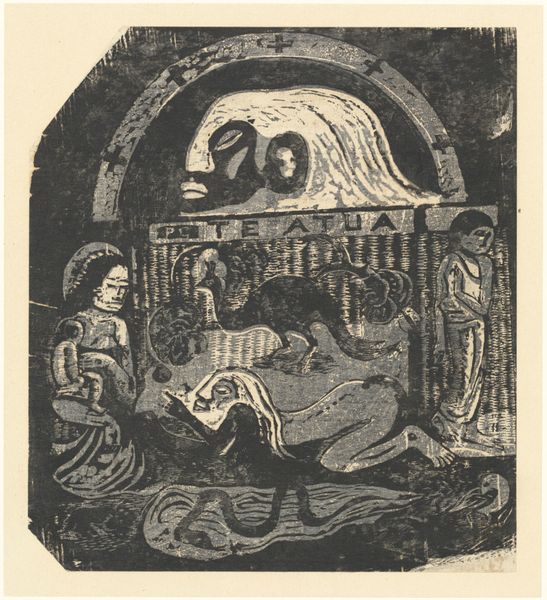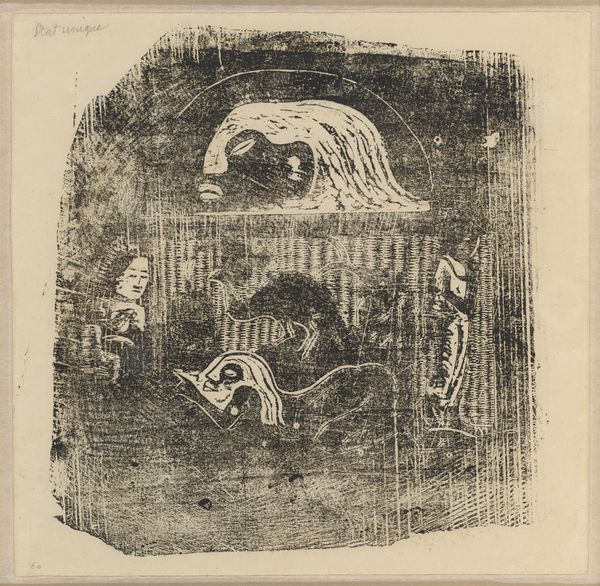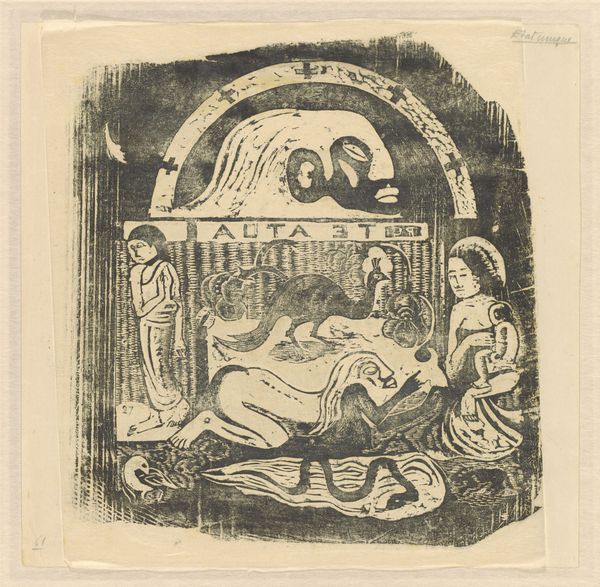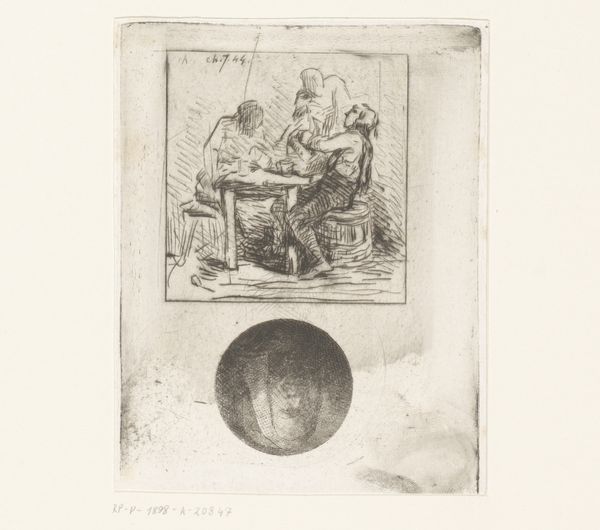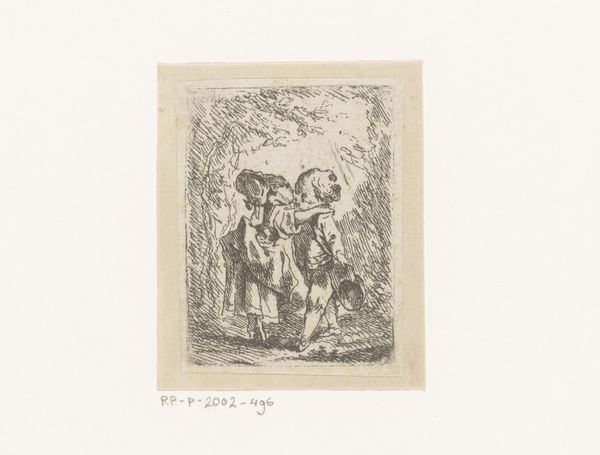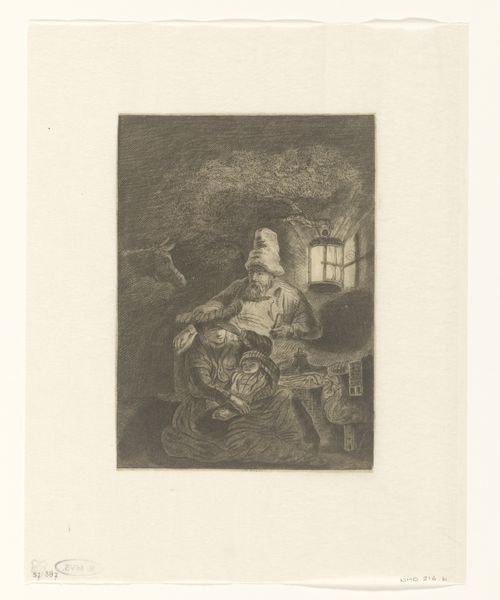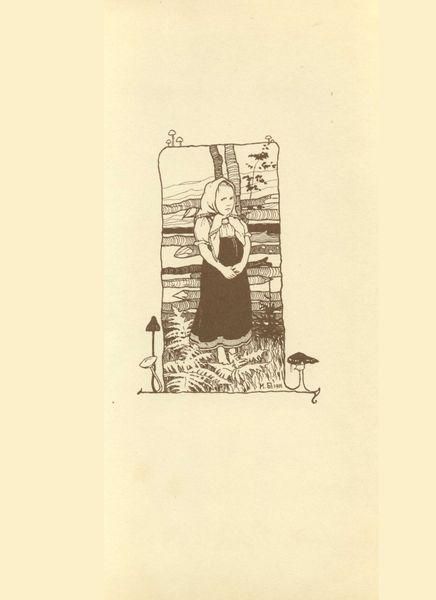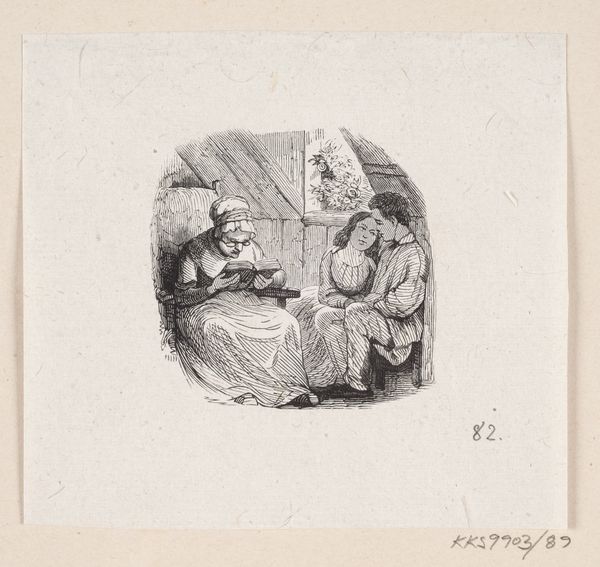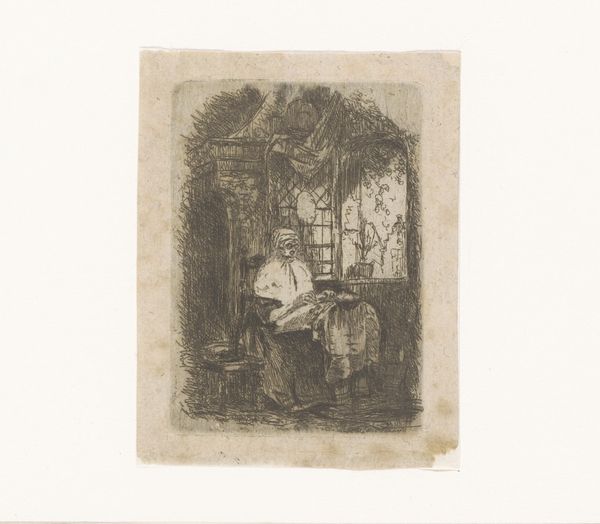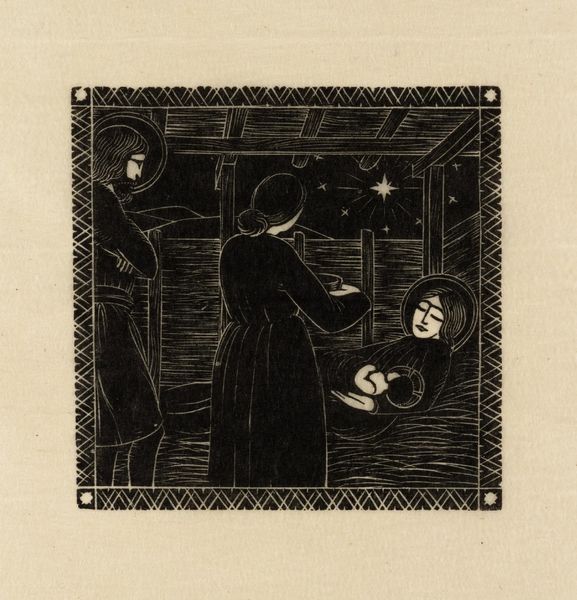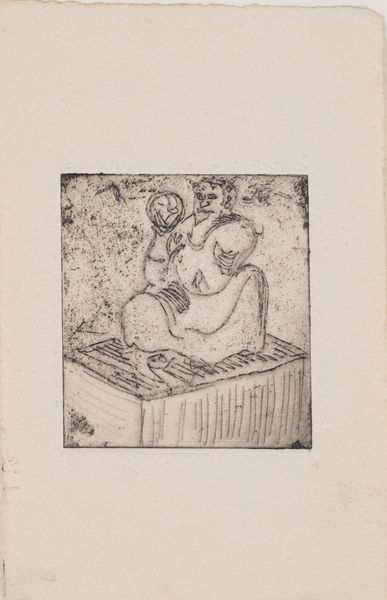
Te atua (The God), from the Suite of Late Wood-Block Prints Possibly 1899 - 1995
0:00
0:00
Dimensions: 244 × 227 mm (image); 500 × 335 mm (sheet, sight)
Copyright: Public Domain
Curator: I'm struck by the stark contrasts in Paul Gauguin's woodblock print, "Te atua (The God)," likely created between 1899 and 1995. The way the blacks and grays play together…it feels very immediate and visceral. Editor: The materiality is central here. As a woodblock print, its production is inherently about the labor, the carving away, the repetitive pressing. You sense the artist’s hand directly in the image through the texture of the wood and the starkness of the printmaking. Curator: Absolutely. The title, "Te Atua," which means "the God" in Tahitian, is significant. This piece pulls heavily from Gauguin's time in French Polynesia, exploring indigenous spirituality and the complexities of cultural encounters in colonial contexts. There's a layering of identities at play here. Editor: Yes, and those visual layers are created so intentionally through the process of carving and printing. It speaks to the tension between the surface image and the deep structures that uphold it – just like the relationship between colonizer and colonized. How that colonial impact becomes part of even a handmade reproduction…fascinating. Curator: I find the composition incredibly powerful too. We see figures rendered with flattened perspectives and bold outlines, recalling both Polynesian art forms and European avant-garde movements. Note the ambiguous figure under the words 'Te Atua,' an Emu between 2 human figures that seems to be both protecting, and also running from an unknown, hidden reality. The inclusion of hybrid symbols asks vital questions of cultural translation and the distortion of belief systems under imperialism. Editor: You see that emphasis on line and form everywhere, guiding the eye. It comes from Gauguin understanding what wood is. A dense, natural material to carve that directly informs the image's character, creating textures and conveying depth that relates to the landscape where it all started. Curator: For me, viewing "Te atua" opens dialogue. The work compels conversations about power, representation, and the ongoing legacies of colonialism that still resonate. Editor: And about what labour it takes to peel back what colonization made possible to look critically and say that art is labour, both physical and also intellectual. This print captures a profound act of that labour.
Comments
No comments
Be the first to comment and join the conversation on the ultimate creative platform.
